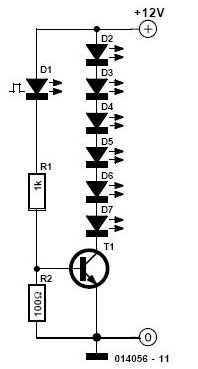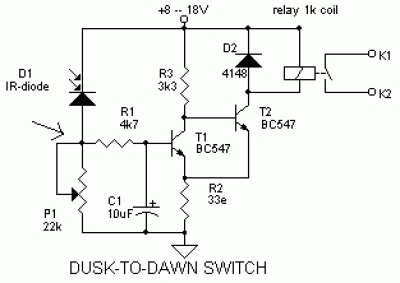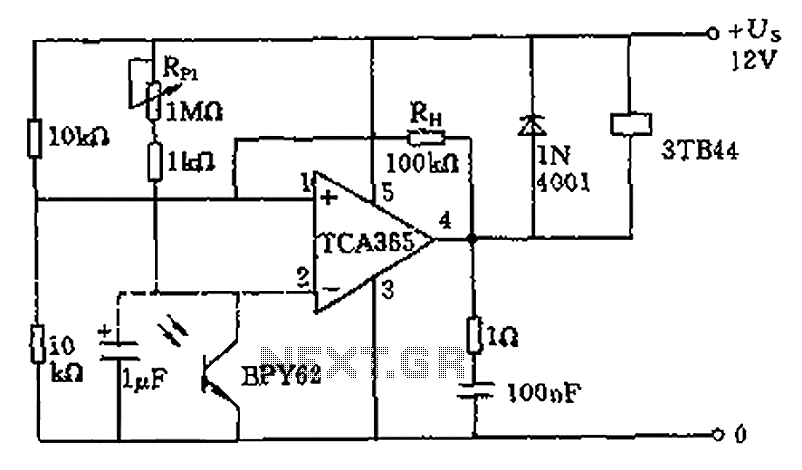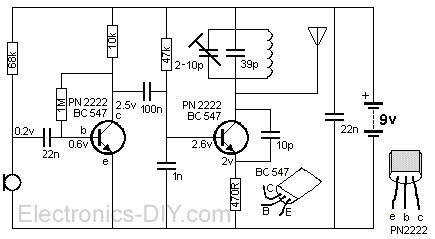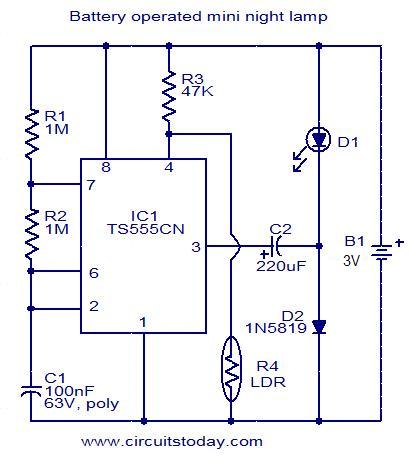
Mini strobe light
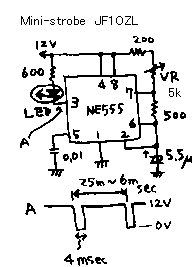
This is a mini strobe light. NE555 is used as a self-oscillator. The width of the output pulse is changed by the variable resistor. 25 msec means 40 Hz. 6 msec means 166 Hz. A LED is connected to the output of this oscillator. Therefore, the LED twinkles from 40 Hz to 166 Hz. I lighted a speaker by this twinkling LED. The cone of a speaker is vibrated by 50 Hz with a 3V-AC power transformer. I adjusted the VR to oscillate 51 Hz. Then, I can watch the cone of the speaker vibrate slowly with 1 Hz. A strobe scope is used in order to research the vibration. This is a very cheap one. If you are a teacher, you can teach the children that sound is a vibration of the air. Also, you can teach the concept of phase and frequency with this equipment. If you are a young man, you can have a time with your girlfriend in the dark room. Description add on 10 Dec 2000: I forget to say about the most important thing. Such an instrument can be used to evaluate the mechanical stability of the parts on the printed board.
The circuit utilizes the NE555 timer IC configured in astable mode, functioning as a self-oscillator to generate a square wave output. The frequency of oscillation is determined by the values of the timing resistor and capacitor connected to the NE555. A variable resistor (VR) is included in the circuit to allow for the adjustment of the pulse width, thereby changing the frequency of the output signal. The output frequency can range from 40 Hz to 166 Hz, depending on the resistance value set on the variable resistor.
An LED is connected to the output of the NE555, which causes it to blink in synchronization with the oscillating frequency, creating a strobe light effect. This strobe light can be used in various applications, including visual demonstrations of sound waves and vibrations. The circuit also includes a speaker, which is driven by a 3V AC power transformer. The speaker cone vibrates at a frequency of 50 Hz, and by adjusting the variable resistor, the oscillation can be fine-tuned to 51 Hz. This allows for the observation of the speaker cone's slow vibrations at a 1 Hz rate when viewed under strobe lighting conditions.
In educational settings, this circuit serves as an effective tool for teaching concepts of sound, vibration, phase, and frequency. It can also be employed in practical applications to evaluate the mechanical stability of components on a printed circuit board (PCB). The simplicity and low cost of the design make it accessible for various learning and experimental purposes.This is a mini strobe light. NE555 is used as a self oscillator. The width of output pulse is changed by the variable resister. 25msec means 40Hz. 6m sec means 166Hz. A LED is connected on the output of this oscillator. Therefore LED twinkles from 40Hz to 166Hz. I lighted a speaker by this twinkle LED. The cone of a speaker is vibrated by 50Hz with 3V-AC power transformer. I adjusted the VR to oscillate 51Hz. Then, I can watch the corn of the speaker vibrates slowly with 1Hz. A strobe scope is used in order to research the vibration. This is very cheap one. If you are the teacher, you can teach the children that the sound is a vibration of the air. Also you can teach that the concept of phase and frequency with this equipment with this machine. If you are the young man, you can have a time with your girl friend in the dark room.( Last month I looked this light with 5 gentlemen. It was not enjoyable time HIHI) Description add on 10 Dec 2000: I forget to say about most important thing.
Such a instrument can be uaed to evaluate the mechanical stability of the parts on the print boad. 🔗 External reference
The circuit utilizes the NE555 timer IC configured in astable mode, functioning as a self-oscillator to generate a square wave output. The frequency of oscillation is determined by the values of the timing resistor and capacitor connected to the NE555. A variable resistor (VR) is included in the circuit to allow for the adjustment of the pulse width, thereby changing the frequency of the output signal. The output frequency can range from 40 Hz to 166 Hz, depending on the resistance value set on the variable resistor.
An LED is connected to the output of the NE555, which causes it to blink in synchronization with the oscillating frequency, creating a strobe light effect. This strobe light can be used in various applications, including visual demonstrations of sound waves and vibrations. The circuit also includes a speaker, which is driven by a 3V AC power transformer. The speaker cone vibrates at a frequency of 50 Hz, and by adjusting the variable resistor, the oscillation can be fine-tuned to 51 Hz. This allows for the observation of the speaker cone's slow vibrations at a 1 Hz rate when viewed under strobe lighting conditions.
In educational settings, this circuit serves as an effective tool for teaching concepts of sound, vibration, phase, and frequency. It can also be employed in practical applications to evaluate the mechanical stability of components on a printed circuit board (PCB). The simplicity and low cost of the design make it accessible for various learning and experimental purposes.This is a mini strobe light. NE555 is used as a self oscillator. The width of output pulse is changed by the variable resister. 25msec means 40Hz. 6m sec means 166Hz. A LED is connected on the output of this oscillator. Therefore LED twinkles from 40Hz to 166Hz. I lighted a speaker by this twinkle LED. The cone of a speaker is vibrated by 50Hz with 3V-AC power transformer. I adjusted the VR to oscillate 51Hz. Then, I can watch the corn of the speaker vibrates slowly with 1Hz. A strobe scope is used in order to research the vibration. This is very cheap one. If you are the teacher, you can teach the children that the sound is a vibration of the air. Also you can teach that the concept of phase and frequency with this equipment with this machine. If you are the young man, you can have a time with your girl friend in the dark room.( Last month I looked this light with 5 gentlemen. It was not enjoyable time HIHI) Description add on 10 Dec 2000: I forget to say about most important thing.
Such a instrument can be uaed to evaluate the mechanical stability of the parts on the print boad. 🔗 External reference
